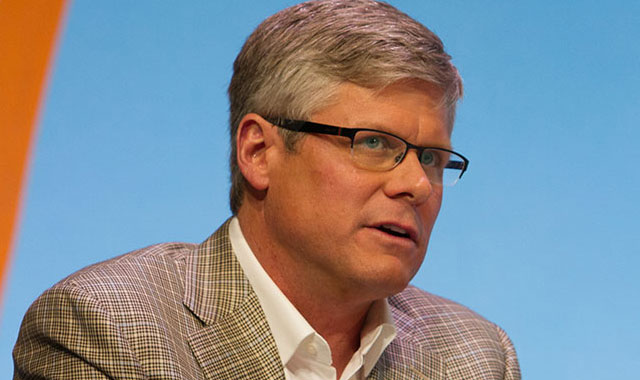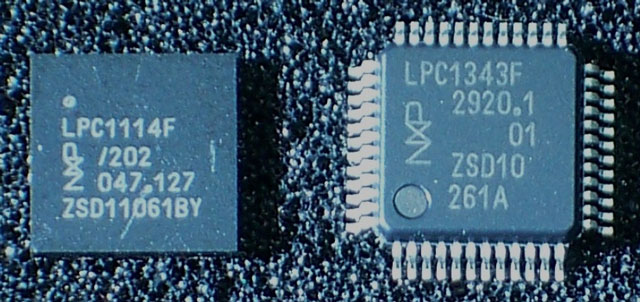
Qualcomm, the largest maker of mobile-phone chips, will acquire NXP Semiconductors in a transaction valued at US$47bn, aiming to speed an expansion into new industries and reduce its dependence on the smartphone market.
San Diego-based Qualcomm agreed to pay $110/share in cash for NXP, the biggest supplier of chips used in the automotive industry, or 11% more than Wednesday’s close, the companies said in a statement on Thursday. The deal will be funded with cash on hand as well as new debt.
CEO Steve Mollenkopf is betting the deal, the largest in the chip industry’s history, will accelerate his company’s entry into the burgeoning market for electronics in cars. Eindhoven, Netherlands-based NXP is strong in that sector following its acquisition last year of Freescale Semiconductor.
“It’s no secret that we’ve been looking around,” Mollenkopf said in an interview. ”If you look at our growth strategy it’s to grow into adjacent markets at the time that they are being disrupted by the technology of mobile.”
The purchase is Qualcomm’s response to slowing growth in demand for smartphones, which provide the bulk of the company’s revenue. The two companies, which will have combined revenue of more than $30bn, will have products that are capable of winning sales in markets worth $138bn by 2020, Qualcomm predicted. Two years after the transaction closes, Qualcomm forecast $500m of annual cost savings.
The equity value of the transaction is $38,5bn. Including debt, the enterprise value goes up to $47bn, according to chief financial officer George Davis. The acquisition will add $11bn of debt to Qualcomm’s balance sheet, which it will be able to rapidly improve by using the overseas cash it generates to pay down, Davis said.
Mollenkopf said he will aim to combine the two companies and their products as quickly as he can and make sure that the management of the combined company has representatives from both sides.
NXP stock rose 2,8% to $101,45 in early US trading. Qualcomm gained 2% to $69,60.
Record consolidation
Last year was a record for chip-industry consolidation, with semiconductor makers getting together to weather rising costs and a shrinking list of customers. Though he sat out the deal spree in 2015, Mollenkopf is now making use of his company’s more than $30bn in cash reserves, most of which is held overseas.
“There just isn’t enough mobile growth to be had — they are already the dominant chip supplier and licenser of intellectual property in an industry where the product is being commoditised and volume growth is moderating,” said Sid Parakh, a fund manager at Becker Capital Management, which owns Qualcomm stock.

“As a long-term investor, I would much rather have a more diverse company that has the potential to participate in new markets and probably grow significantly more than it would in a mobile-only world.”
NXP is projected to report 2016 sales of $9,5bn, the average of analysts’ estimates from data compiled by Bloomberg. By revenue, that makes it less than half the size of Qualcomm, which will report sales of $23,2bn this year, according to analysts. Still, the Dutch company has averaged about 11% growth over the past three years, while the US chip maker’s sales declined 5% last year, a collapse from a revenue increase of 30% in 2013.
Connected devices
Like other chip makers, Qualcomm is targeting what’s called the Internet of things, the addition of connections and computing power to everything from washing machines to trucks and industrial equipment.
The company has pitched prospective new customers with modified mobile-phone chips that it says offer the easiest way to add electronic capabilities to a broader range of devices. That push is in its early stages, with wins in areas such as automotive, where Qualcomm’s chips power entertainment devices and cellphone connections to cars.
“Automotive and industrial are Internet of things verticals that we see as more profitable for semiconductors, and this is precisely the exposure that Qualcomm would gain with an NXP deal,” Cowen & Co analyst Timothy Arcuri wrote in a note. “Qualcomm could become the dominant player in connected industrial and automotive applications.”
By buying NXP, which started life as Koninklijke Philips’ chip unit, Qualcomm is taking on the risk of merging with a company that’s in the process of integrating its own acquisition of Freescale Semiconductor. That $16bn transaction was completed in December. NXP owns factories and produces some of its own chips — something Qualcomm has avoided by outsourcing its manufacturing — and has about 44 000 employees, compared with about 33 000 for Qualcomm. — (c) 2016 Bloomberg LP

